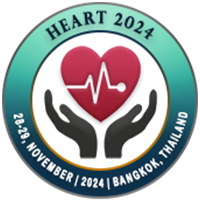
Jelena Kostadinovic
Serbia, SerbiaTitle: Follow-up of cardiotoxicity after breast cancer chemotherapy
Abstract
Thanks to new chemotherapy protocols for breast cancer, survival has been significantly extended. About 80% of patients treated for breast cancer survive for at least 10 years, but in 5-11% of them, cardiotoxicity can be noted even several years after the application of chemotherapy. Through complex, cascading mechanisms leading to the accumulation of toxic free radicals, mitochondrial dysfunction, chemotherapy can cause cardiotoxicity, reversible or irreversible. Cardiotoxicity can manifest as asymptomatic or symptomatic left ventricular (LV) dysfunction. LK dysfunction is indicated by a new decrease in LK ejection fraction by 10%, a new decrease in longitudinal strain by 15% from the initial value, a new increase in biomarkers. In some patients, ischemic heart disease has been proven, and in some, arrhythmias predominate. Trastuzumab, which blocks HER-2 (human epidermal growth factor receptor), and anthracycline increase the risk of heart failure. Some studies have linked aromatase inhibitors with an increased risk of coronary heart disease. An increased risk of arrhythmias is also described. Before the introduction of oncological therapy for breast cancer, it is necessary to assess the risk of developing cardiovascular (CV) toxicity, taking into account CV risk factors, previous diseases (CV; malignant), possible previous oncological therapy, physical examination, EKG, cardiac biomarkers, echocardiography, eventually, cardiac MRI. According to the determined risk for CV toxicity (low, moderate or high/very high) a further cardio-oncological approach is planned. CV risk assessment is mandatory in the first 12 months after the cessation of cardiotoxic therapy, and in asymptomatic women every 5 years. Longer follow-up is especially required by patients with LV dysfunction. A continuous individual and multidisciplinary approach is necessary for patients treated for breast cancer, depending on the risk and/or manifestation of cardiotoxicity of chemotherapy.
Biography
To be updated soon...

